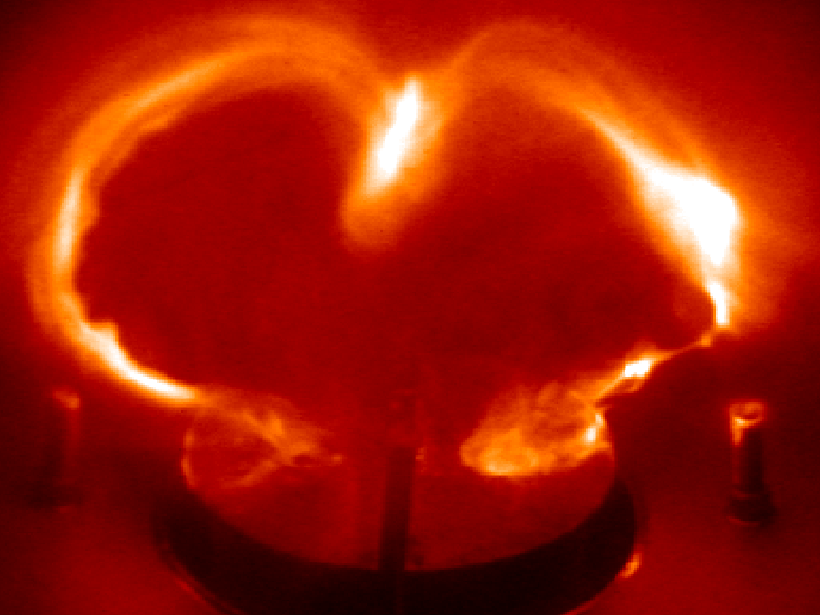Source: Geophysical Research Letters
Coronal mass ejections (CMEs) are huge explosions of plasma from the Sun that race toward Earth in a matter of hours and can cause serious harm to satellites, astronauts, and power grids. For years, scientists have debated over which physical processes could possibly trigger CMEs. Now, Ha and Bellan provide experimental support for one such mechanism.

CMEs are associated with large magnetic field structures called flux ropes that extend outward from the Sun in twisted filaments of plasma. Recent observations suggest that a CME is triggered when a preexisting flux rope suddenly loses stability, causing a plasma eruption. The authors set out to test one proposed mechanism for this loss of stability known as the torus instability.
The torus instability is thought to occur in the Sun’s upper atmosphere, the corona, when the growth of a flux rope is held back by a strapping magnetic field structure that decays with increasing altitude. At a critical altitude, the strapping field is too weak to hold back the flux rope, which then breaks loose and accelerates rapidly, releasing energy in the form of a CME.
It is difficult to measure or model magnetic fields in the corona, so the scientists had to figure out another way to test whether the torus instability could trigger CMEs. The pair decided to create their own flux ropes in the lab. They used a plasma gun and an artificial strapping field to set off CME-like eruptions inside a vacuum chamber.
Using a carefully designed strapping field that decayed as a precise function of height, the scientists were able to create plasma eruptions that mimicked observed CME behavior. CMEs are known to begin with a slow-rise phase that eventually gives way to rapid acceleration; the experimental CMEs followed that pattern, supporting the torus instability hypothesis.
This study marks the first time that scientists have successfully demonstrated the transition from slow rise to rapid acceleration in the lab. These results and similar experiments in the future could improve predictions of potentially destructive CMEs. (Geophysical Research Letters, doi:10.1002/2016GL069744, 2016)
—Sarah Stanley, Freelance Writer
Citation:
Stanley, S. (2016), Lab experiment tests what triggers massive solar eruptions, Eos, 97, https://doi.org/10.1029/2016EO060487. Published on 07 October 2016.
Text © 2016. The authors. CC BY-NC-ND 3.0
Except where otherwise noted, images are subject to copyright. Any reuse without express permission from the copyright owner is prohibited.

